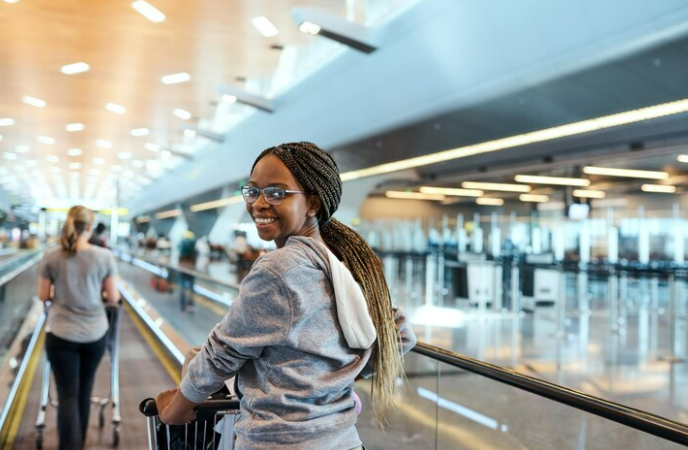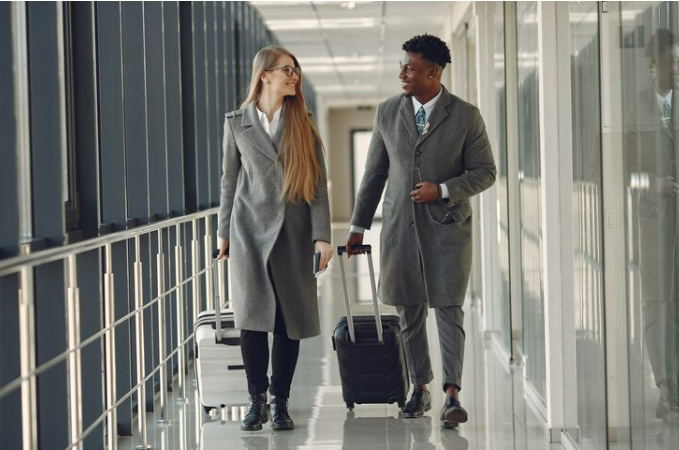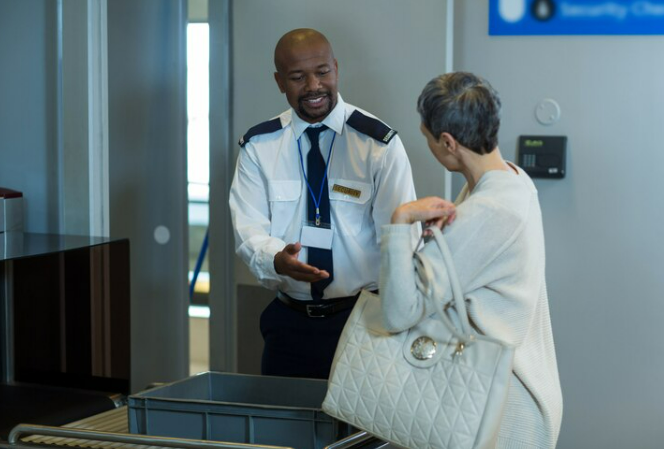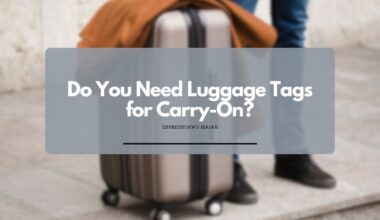As an Amazon Associate, I earn a small commission from qualifying purchases. Learn more about this.
Have you ever wondered where you pick up your bags after a flight? Is it inside or outside the security area?
When you fly, you often have bags that go in the plane’s belly. After landing, these bags go to a special place called ‘baggage claim’.
But is this place inside the secure area of the airport, or outside where anyone can go?
Understanding the Airport Layout:
Generally, airports are divided into several key areas: the check-in area, security checkpoints, departure gates, and the baggage claim area.

When you first step into an airport, you’re usually in the check-in area.
This is where your journey begins.
Here, travelers queue to check in their luggage that’s too large to carry onto the plane.
You receive your boarding pass and, if necessary, pay any extra fees for baggage. This area is bustling with people, kiosks, and airline counters.
After check-in, you head to the security checkpoints. This is a restricted zone, where only passengers holding boarding passes and airport staff are allowed.
Security is tight here for good reasons – ensuring the safety of everyone.
You’ll go through a series of checks: showing your boarding pass and ID, passing through a metal detector, and having your carry-on baggage scanned.
This process might seem tedious, but it’s all about ensuring safe travel.
Beyond the security checkpoint lies the departure area.
Here, you find various gates from where flights depart.
This area is often filled with shops, restaurants, and lounges. It’s a place where passengers wait before boarding their flights, grab a bite to eat, or shop for last-minute items.
In contrast, the baggage claim area, which we’ll discuss in detail, is typically situated post-flight and outside the secure zone of the airport.
It’s designed for ease of access, both for passengers picking up their luggage and for those waiting to meet arriving passengers. It marks the end of the secure airport zone and the transition back into the everyday non-secure world.
Is Baggage Claim Outside of Security?
When it comes to the layout of an airport, one of the most frequent questions travelers have is regarding the location of the baggage claim area.
Well, in essence, the baggage claim is almost always situated outside the airport’s secure zone.
This strategic positioning is crucial for several reasons, primarily revolving around ease of access and operational flow.
Once your flight lands and you disembark, you’re effectively transitioning from a highly secure, passengers-only area into a more public space.
The journey from the aircraft to the baggage claim area is often a direct path leading you out of the secure zone.
The rationale behind this setup is practicality and efficiency. Since you’ve completed your air travel, the stringent security measures that apply to departing passengers are no longer necessary.
Moreover, placing the baggage claim outside the secure area allows friends and family to greet arriving passengers without having to pass through security checks.
This setup is especially beneficial for large international airports where passengers may be greeted by relatives or friends who have not traveled with them.
From a logistics standpoint, having baggage claim outside the secure area expedites the process of leaving the airport.
It streamlines the flow of passengers, as they collect their luggage and proceed to exit the airport, making way for new arriving passengers.
This positioning also eases the workload of security personnel, as they can focus their efforts on incoming passengers and security threats, rather than monitoring the baggage claim area.
While this setup is the norm, it’s important to note that airport designs can vary globally.
Some airports might have unique layouts or specific security protocols that affect where the baggage claim is located.
Meeting People at Baggage Claim:

One of the key conveniences of having the baggage claim area outside the security zone is the ease of meeting friends and family.
Imagine after a long flight, you walk towards the baggage claim, and there, waiting for you, are familiar faces.
This is possible because the baggage claim area is accessible to everyone – not just passengers coming off flights.
This setup is particularly helpful for travelers who might need assistance after a long journey, such as elderly passengers or those with young children.
Their loved ones can meet them right at baggage claim, helping them with their luggage and providing a warm welcome back.
Furthermore, for those coordinating rides home or to their next destination, meeting at baggage claim simplifies logistics.
Instead of navigating through the busy airport or coordinating meeting points, travelers can easily find their ride waiting for them in this common area.
This not only saves time but also reduces the stress often associated with airport arrivals, especially in unfamiliar cities or busy airports.
Safety and Security in Baggage Claim:
While the baggage claim area is more accessible to the public, airports take several measures to ensure both safety and security.
Understandably, travelers often have concerns about the security of their belongings in such an open space.
Airports address these concerns through a combination of surveillance, staff presence, and sometimes even specific technology.
Firstly, surveillance cameras play a crucial role.
These cameras are strategically placed to monitor the area continuously, providing a record of all activities around the baggage carousels.
This surveillance acts as a deterrent against theft and helps in resolving any incidents that do occur.
Additionally, airport staff are often present in and around the baggage claim area.

Their duties include assisting passengers, monitoring the retrieval of luggage, and sometimes checking baggage claim tags.
In some airports, particularly those with higher security concerns, you might even be required to show your baggage claim tag or ID to prove ownership of your luggage before exiting with it.
Moreover, some airports have implemented advanced systems that match baggage with passengers using technology like RFID tags.
These systems further enhance security by ensuring that only the rightful owner picks up each piece of luggage.
It’s also important for passengers to be vigilant.
Keeping a close eye on your belongings, reporting any suspicious activities, and promptly reporting any issues with your luggage are key steps you can take to ensure your own security in the baggage claim area.
What If You’re Transferring Flights?
Navigating a transfer between flights adds an extra layer to your travel itinerary, especially when it involves your luggage.
If you’re transferring to another flight, whether it’s a domestic connection or an international one, the process of dealing with your checked baggage can vary.
In many cases, if you’re booked through on a connecting flight with the same airline, your luggage will be automatically transferred to your next flight.
This means you won’t need to visit the baggage claim area at your transfer airport.
Your bags will be whisked away and loaded onto your next plane, awaiting you at your final destination.
This transfer can be a relief, as it saves you time and the hassle of retrieving and rechecking your bags.
However, this isn’t always the case.
In some situations, particularly when changing airlines or when your itinerary involves international travel, you might need to collect your luggage at the transfer point and check it in again for your next flight.
This process is often necessary for customs and security reasons, especially on international routes.
Here, you’ll briefly enter the baggage claim area, claim your bags, and then proceed to check them in for your onward journey.







